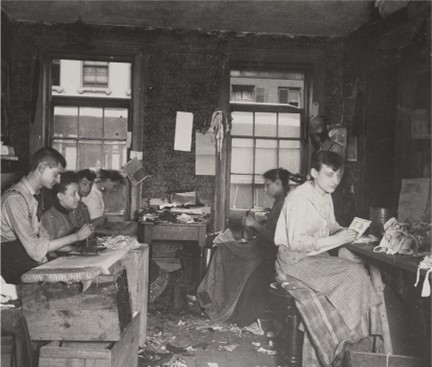Module 6: Life and Labor in the Industrial World
Section outline
-

The Second Industrial Revolution, which began in the second half of the nineteenth century and lasted until the start of World War I, brought about radical changes to national economies and international trade. Workplaces, homes, cities, and the experiences of entertainment, art, and literature were completely reshaped. Even the family underwent significant changes. This chapter focuses on the social and cultural transformations that accompanied the technological innovations of the nineteenth and early twentieth centuries. > Jacob A. Riis, an American social reformer and documentary photographer, often took photographs depicting urban life, such as this image of men and women sewing and ironing in a tenement factory around 1889.
(Credit: Riis, Jacob A, photographer. Necktie workshop in a Division Street tenement. New York, ca. 1889. Photograph. https://www.loc.gov/item/2002710291/.)
Upon completion of this module, you will be able to:- Describe the effects on everyday and work life of the major innovations of the late nineteenth and early twentieth centuries
- Discuss the abolition of slavery and serfdom during the Second Industrial Revolution
- Analyze the
effectiveness of government regulation of the industrial workplace and of city
life
- Analyze nineteenth- and early twentieth-century labor and social reform movements, including socialism
To achieve these objectives:
- Read the Module 6 Introduction.
- Read Chapter 6 in Western Civilization II.
- Complete the assessments and discussion questions.
Module Pressbooks Resources and Activities
You will find the following resources and activities in this module at the Pressbooks website. Click on the links below to access or complete each item.
Background Colour
Font Face
Font Kerning
Font Size
Image Visibility
Letter Spacing
Line Height
Link Highlight
Text Colour
